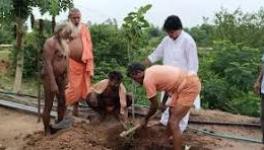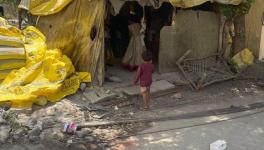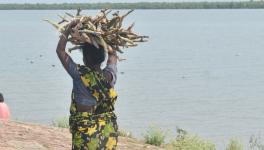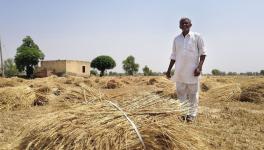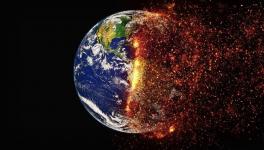The Killing Heat & Equations of Climate Change
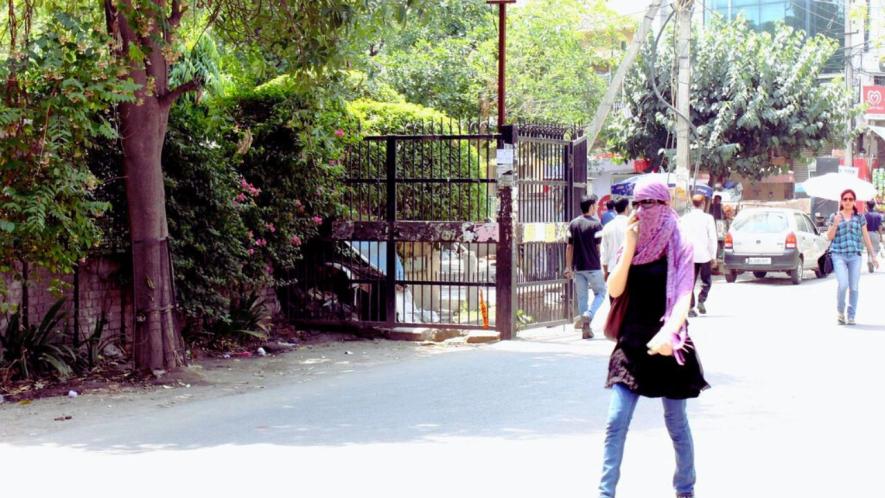
Representational Image. Image Courtesy: Flickr
The intermittent spells of pleasant rains that continued to give relief to North India from the heat wave in May this year, are no longer in sight. In fact, Delhi witnessed the wettest May ever on record with a total rainfall of 186.4 mm, surpassing the previous record of 165 mm in May 2008. But now the mercury is soaring above the 44-degree Celsius mark across parts of Delhi, Rajasthan, Punjab, and Haryana. The country’s nodal weather agency, India Meteorological Department (IMD), also issued a red alert for five straight days since June 9.
“Monsoon had advanced almost a week before its time, however, after reaching Mumbai and many parts of Northeast India, the progress stalled, and the frequency of western disturbances also reduced significantly. In the last week, we have seen that cyclonic circulations over Northwest India were very weak and there has been a continuous flow of hot and dry winds over the Indo-Gangetic plains, which include most parts of Gujarat, Rajasthan, Madhya Pradesh, Bihar, Jharkhand, and the entire northern plains,” said Mahesh Palawat, Vice President- Meteorology and Climate Change, Skymet Weather.”
“The heat is being transported from the Thar desert, where temperatures have already been settling near 48 degrees Celsius, reaching up to Eastern and Central parts of the country. The continuous flow of these dry north-westerly winds is also not allowing the Monsoon further,” he added.
The searing heat wave became even more uncomfortable with the rise in humidity. This does not just increase discomfort but also poses a challenge to the country’s health infrastructure. A prolonged exposure to extreme temperatures along with high humidity levels often causes heat strokes, mainly impacting the poor, outdoor workers, children, and the elderly.
According to experts, the ongoing weather conditions are directly related to the impact of global warming. Climate change has increased the variability of extreme weather events, especially heatwaves over India.
“North-west India remains susceptible to heatwaves until the monsoon arrives over the region. Though people rush to the hills for a few days to get instant relief, all the hilly states, too, have seen 2 to 4 degrees of warming. There is no doubt that climate change has led to increased severity of heatwaves across the region. Humidity is another troubling factor that has become more prominent due to global warming. A slight increase in humidity levels add 2-4 degrees Celsius, increasing discomfort. Morbidity has also risen because of these combined factors,” said K J Ramesh, Former Director General, IMD, told this writer, adding that with the rise of every one degree of warming, the capacity of the air to hold water vapour has increased by 7%.
‘Influence of wind pattern’, a latest study, has revealed that the decrease in wind speed over Northern India during pre-monsoon months (March–May) is evident, which potentially reduces the transport of cooler air masses to the warmer region, thus intensifying heatwave occurrences in these regions.
Conversely, stronger wind speeds over the Southern parts of India suggest more efficient moisture transport, corroborating the observed rise in specific humidity. This interplay between weakened winds and dry conditions in the North versus strengthened winds and moist conditions in the South suggests a shifting climatic pattern, possibly linked to large-scale circulation changes, such as the weakening of westerlies or alterations in the monsoon onset.
The emergence of heatwave hotspots in coastal states, such as Kerala and the hilly states of North-Eastern India, is a notable anomaly, as these regions are traditionally known for moderate temperatures.
One of the contributing factors is the build-up of high-pressure systems over Northwest India during the pre-monsoon months, leading to subsidence (downward movement) of dry air. This subsidence inhibits cloud formation and enhances solar radiation (sunlight), intensifying surface temperatures. High-pressure areas over Northwest India during the pre-monsoon season can create subsidence and adiabatic warming (when air is compressed, it heats and this process is called adiabatic heating), which intensifies heatwave conditions. These high-pressure systems inhibit cloud formation and precipitation, leading to clear skies and increased solar radiation, which enhances surface temperatures.
“By the end of May, a strong high pressure had developed over Western Russia, which is also seen as an atmospheric blocking pattern. It was so strong that it tweaked wind patterns over the Indian region, paving the way for dry and hot winds from Afghanistan and Pakistan. This strong and dry air had shut down the formation of clouds and weakened the monsoon circulations and finally stopped the onset progression of the monsoon,” said Akshay Deoras, Research Scientist, National Centre for Atmospheric Science, University of Reading, United Kingdom.
Read Also: Cities Need to Beat the Heat: India Should Place Moratorium on Cutting Trees
The circulation pattern associated with these high-pressure systems directs warm, dry air toward the East and Southeast, influencing the North Eastern states and coastal Kerala. This advection of warm air contributes to unusual heatwave occurrences in regions traditionally considered cooler.
Additionally, the high-pressure zones induce a northerly wind flow, which transports hot and dry continental air toward the Southern and North Eastern regions. This phenomenon is further exacerbated by the orographic influence in hilly regions, where descending air on the leeward side results in adiabatic warming.
Heatwave Impact on Mortality
“India is witnessing a sharp surge in heat-related hospitalisations, particularly for heat strokes, as the frequency and intensity of heatwaves increase. What’s especially concerning is the shift in seasonal patterns driven by climate change — extreme heat events, now extending well into the monsoon months. This prolonged heat exposure, combined with high humidity, amplifies health risks and human discomfort. Urban heat islands and localised micro-climatic changes are making matters worse in cities, necessitating urgent, localised interventions. We need robust heat action plans, climate-resilient infrastructure, and targeted public health strategies to mitigate these growing threats,” Palak Balyan, research lead at Delhi-based think-tank, Climate Trends, told this writer.
The writer is a freelance journalist.
Get the latest reports & analysis with people's perspective on Protests, movements & deep analytical videos, discussions of the current affairs in your Telegram app. Subscribe to NewsClick's Telegram channel & get Real-Time updates on stories, as they get published on our website.











